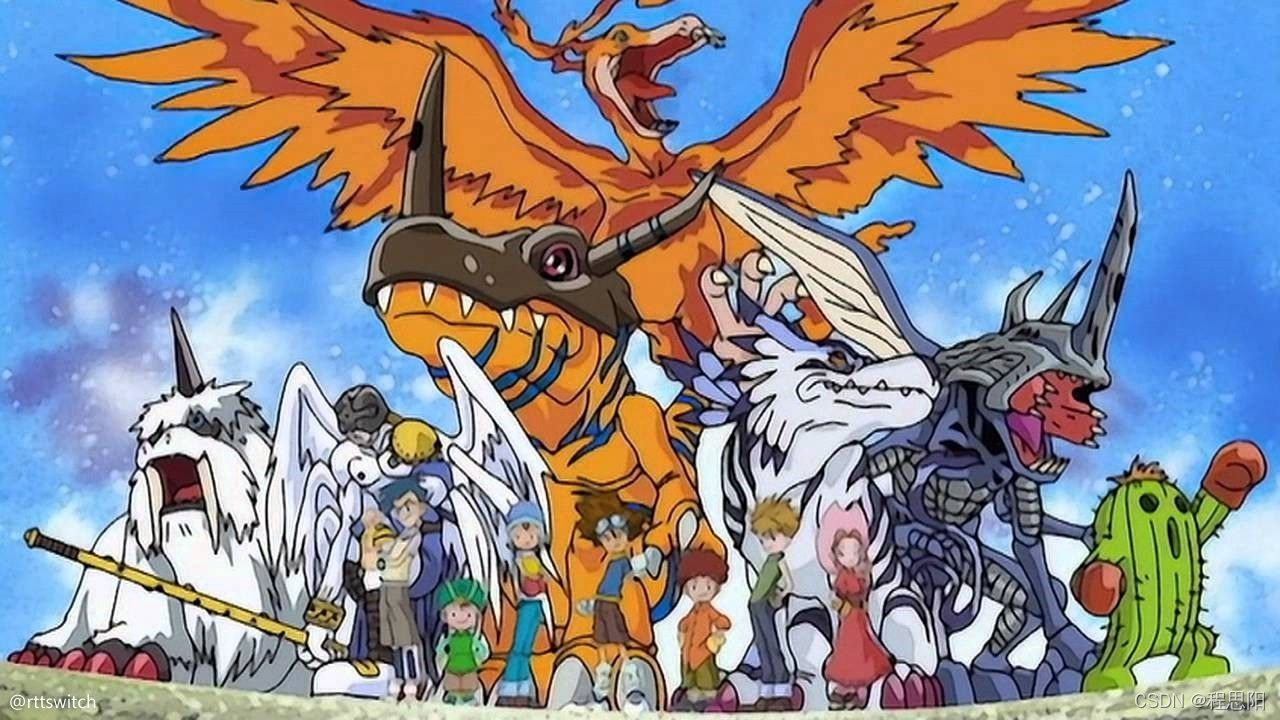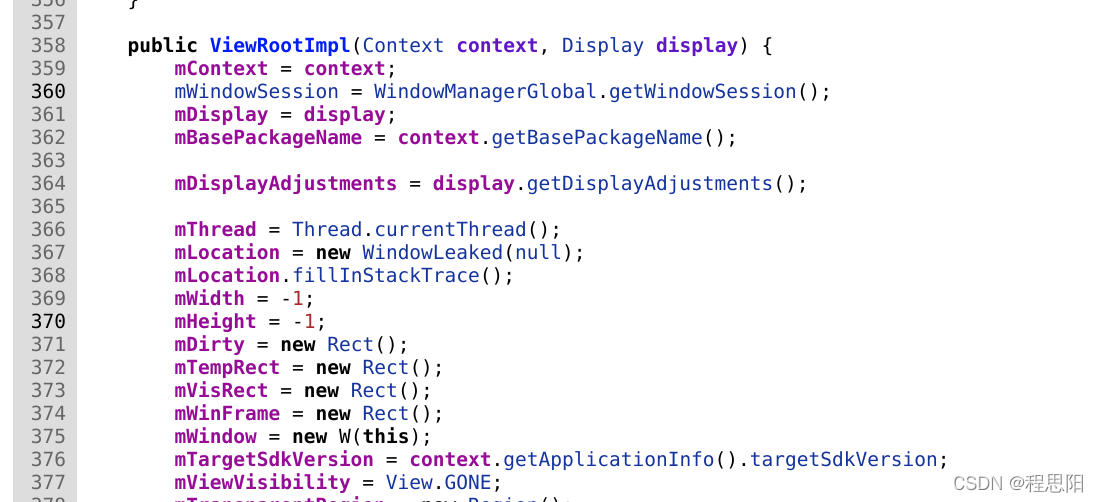为什么有时候在子线程更新UI没报错?
抓住十一月的尾巴,分享一首童年回忆: 🎶brave heart

看到这个标题,好多人第一时间想到的是什么?
感兴趣的不妨跟着下面的代码看看会发生什么?
首先我在 onCreate 方法里调用 setText() 方法
override fun onCreate(savedInstanceState: Bundle?) {
super.onCreate(savedInstanceState)
mContext = this
Log.e(TAG, "onCreate")
Thread {
val simpleDateFormat = SimpleDateFormat("yyyy年MM月dd日 HH:mm:ss") // HH:mm:ss
//获取当前时间
val date = Date(System.currentTimeMillis())
// 更新TextView文本
tv_title.text="Date获取当前日期时间" + simpleDateFormat.format(date))
}.start()
}
- 1
- 2
- 3
- 4
- 5
- 6
- 7
- 8
- 9
- 10
- 11
- 12
- 13
这个时候允许呢,会发现,哎?为什么正常呢,不应该报错吗?
但是呢, 当我改成了这样以后再次运行
Thread {
try {
Thread.sleep(2000)
val simpleDateFormat = SimpleDateFormat("yyyy年MM月dd日 HH:mm:ss") // HH:mm:ss
//获取当前时间
val date = Date(System.currentTimeMillis())
// 更新TextView文本内容
tv_title.text = "Date获取当前日期时间" + simpleDateFormat.format(date)
} catch (e: InterruptedException) {
e.printStackTrace()
}
}.start()
- 1
- 2
- 3
- 4
- 5
- 6
- 7
- 8
- 9
- 10
- 11
- 12
结果
android.view.ViewRootImpl$CalledFromWrongThreadException: Only the original thread that created a view hierarchy can touch its views.
at android.view.ViewRootImpl.checkThread(ViewRootImpl.java:6557)
at android.view.ViewRootImpl.invalidateChildInParent(ViewRootImpl.java:943)
at android.view.ViewGroup.invalidateChild(ViewGroup.java:5081)
at android.view.View.invalidateInternal(View.java:12719)
at android.view.View.invalidate(View.java:12683)
at android.view.View.invalidate(View.java:12667)
at android.widget.TextView.checkForRelayout(TextView.java:7167)
at android.widget.TextView.setText(TextView.java:4347)
at android.widget.TextView.setText(TextView.java:4204)
at android.widget.TextView.setText(TextView.java:4179)
- 1
- 2
- 3
- 4
- 5
- 6
- 7
- 8
- 9
- 10
- 11
这应该就是大家熟悉的报错了吧,不允许在非UI线程中更新UI线程
既然报这个错了,那就跟进去,看看 ViewRootImpl.java 为什么报这个错,之前分享过看源码的方式。
点我看源码
既然报错已经告诉我们在哪一行了,那我们就点进去看看,可以很容易的找到
在这里要说明一下,在Android2.2以后是用ViewRootImpl来代替ViewRoot的,用来连接WindowManager和DecorView,而且View的绘制也是通过ViewRootImpl来完成的。
6554 void checkThread() {
6555 if (mThread != Thread.currentThread()) {
6556 throw new CalledFromWrongThreadException(
6557 "Only the original thread that created a view hierarchy can touch its views.");
6558 }
6559 }
- 1
- 2
- 3
- 4
- 5
- 6
当Activity对象被创建完毕后,将DecorView添加到Window中,同时会创建ViewRootImpl对象,在源码中可以看到 mThread 是在ViewRootImpl 的构造方法里这样初始化的。然后再把他设为主线程。
那现在捋一下,从上面的错误栈里,可以看到调用的流程是:
at android.widget.TextView.setText(TextView.java:4347)
at android.widget.TextView.checkForRelayout(TextView.java:7167)
at android.view.View.invalidate(View.java:12667)
at android.view.View.invalidateInternal(View.java:12719)
atandroid.view.ViewGroup.invalidateChild(ViewGroup.java:5081)
atandroid.view.ViewRootImpl.invalidateChildInParent(ViewRootImpl.java:943)
at android.view.ViewRootImpl.checkThread(ViewRootImpl.java:6557)
所以现在聪明的同事是不是知道了,要去看看 ViewRootImpl 这个是在哪里被初始化的?
3126 final void handleResumeActivity(IBinder token,
3127 boolean clearHide, boolean isForward, boolean reallyResume) {
...
3158 if (r.window == null && !a.mFinished && willBeVisible) {
3159 r.window = r.activity.getWindow();
3160 View decor = r.window.getDecorView();
3161 decor.setVisibility(View.INVISIBLE);
3162 ViewManager wm = a.getWindowManager();
3163 WindowManager.LayoutParams l = r.window.getAttributes();
3164 a.mDecor = decor;
3165 l.type = WindowManager.LayoutParams.TYPE_BASE_APPLICATION;
3166 l.softInputMode |= forwardBit;
3167 if (a.mVisibleFromClient) {
3168 a.mWindowAdded = true;
3169 wm.addView(decor, l);
3170 }
3171
3172 ...
3247 }
- 1
- 2
- 3
- 4
- 5
- 6
- 7
- 8
- 9
- 10
- 11
- 12
- 13
- 14
- 15
- 16
- 17
- 18
- 19
最后的 wm.addView(decor, l) 就是我们要找的答案,这个时候看一下windowManager.addView(decorView)
public void addView(View view, ViewGroup.LayoutParams params,
232 Display display, Window parentWindow) {
233 if (view == null) {
234 throw new IllegalArgumentException("view must not be null");
235 }
236 if (display == null) {
237 throw new IllegalArgumentException("display must not be null");
238 }
239 if (!(params instanceof WindowManager.LayoutParams)) {
240 throw new IllegalArgumentException("Params must be WindowManager.LayoutParams");
241 }
242
257 ViewRootImpl root;
258 View panelParentView = null;
...
303 mViews.add(view);
304 mRoots.add(root);
305 mParams.add(wparams);
306 }
307
308 // do this last because it fires off messages to start doing things
309 try {
310 root.setView(view, wparams, panelParentView);
311 } catch (RuntimeException e) {
312 // BadTokenException or InvalidDisplayException, clean up.
313 synchronized (mLock) {
314 final int index = findViewLocked(view, false);
315 if (index >= 0) {
316 removeViewLocked(index, true);
317 }
318 }
319 throw e;
320 }
321 }
- 1
- 2
- 3
- 4
- 5
- 6
- 7
- 8
- 9
- 10
- 11
- 12
- 13
- 14
- 15
- 16
- 17
- 18
- 19
- 20
- 21
- 22
- 23
- 24
- 25
- 26
- 27
- 28
- 29
- 30
- 31
- 32
- 33
- 34
- 35
看到这里,是不是有种豁然开朗的感觉,因为已经找到了答案,答案就是跟 ViewRootImpl 的初始化有关,因为我之前的代码是在 onCreate() 的时候此时去设置textview,此时呢 View 还没被绘制出来,ViewRootImpl 还未创建,它的创建是在 handleResumeActivity() 的调用到 windowManager.addView(decorView) 时候。
文章来源: chengsy.blog.csdn.net,作者:程思扬,版权归原作者所有,如需转载,请联系作者。
原文链接:chengsy.blog.csdn.net/article/details/121639338
- 点赞
- 收藏
- 关注作者


评论(0)